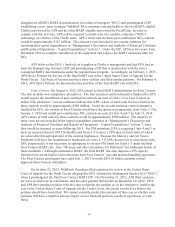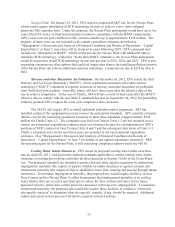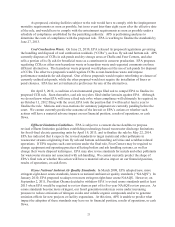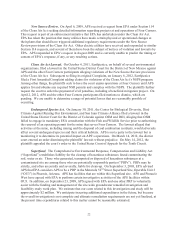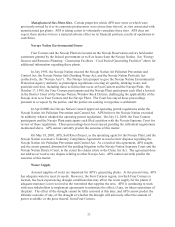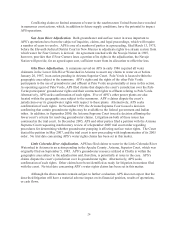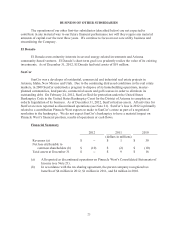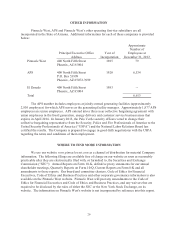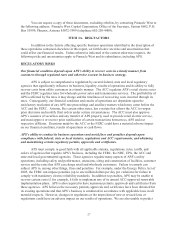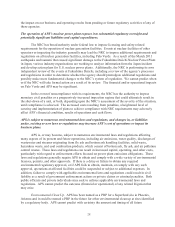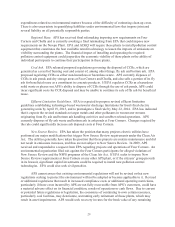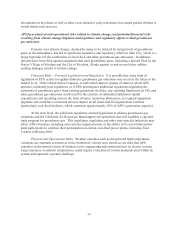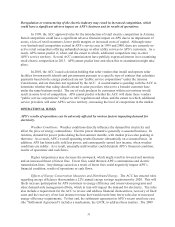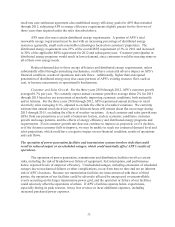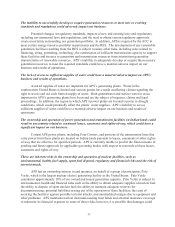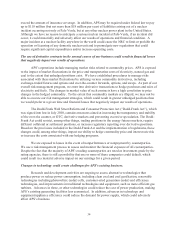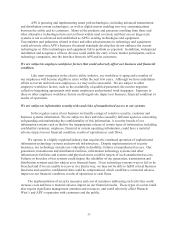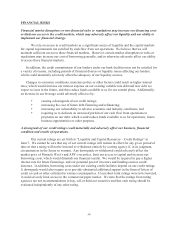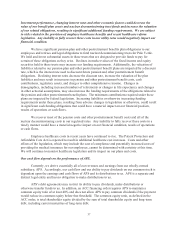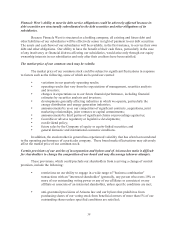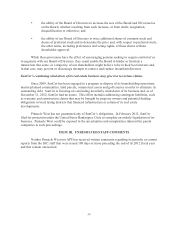APS 2012 Annual Report Download - page 53
Download and view the complete annual report
Please find page 53 of the 2012 APS annual report below. You can navigate through the pages in the report by either clicking on the pages listed below, or by using the keyword search tool below to find specific information within the annual report.29
expenditures related to environmental matters because of the difficulty of estimating clean up costs.
There is also uncertainty in quantifying liabilities under environmental laws that impose joint and
several liability on all potentially responsible parties.
Regional Haze. APS has received final rulemaking imposing new requirements on Four
Corners and Cholla and is currently awaiting a final rulemaking from EPA that could impose new
requirements on the Navajo Plant. EPA and ADEQ will require these plants to install pollution control
equipment that constitutes the best available retrofit technology to lessen the impacts of emissions on
visibility surrounding the plants. The financial impact of installing and operating the required
pollution control equipment could jeopardize the economic viability of these plants or the ability of
individual participants to continue their participation in these plants.
Coal Ash. EPA released proposed regulations governing the disposal of CCRs, which are
generated as a result of burning coal and consist of, among other things, fly ash and bottom ash. EPA
proposed regulating CCRs as either non-hazardous or hazardous waste. APS currently disposes of
CCRs in ash ponds and dry storage areas at Four Corners and Cholla, and also sells a portion of its fly
ash for beneficial reuse as a constituent in concrete products. If EPA regulates CCRs as a hazardous
solid waste or phases out APS’s ability to dispose of CCRs through the use of ash ponds, APS could
incur significant costs for CCR disposal and may be unable to continue its sale of fly ash for beneficial
reuse.
Effluent Limitation Guidelines. EPA is expected to propose revised effluent limitation
guidelines establishing technology-based wastewater discharge limitations for fossil-fired electric
generating units by April 19, 2013, and to promulgate a final rule by May 22, 2014. EPA has indicated
that it expects the revised standards to target metals and other pollutants in wastewater streams
originating from fly ash and bottom ash handling activities and scrubber-related operations. APS
currently disposes of fly ash waste and bottom ash in ash ponds at Four Corners. Changes required by
the rule could significantly increase ash disposal costs at Four Corners.
New Source Review. EPA has taken the position that many projects electric utilities have
performed are major modifications that trigger New Source Review requirements under the Clean Air
Act. The utilities generally have taken the position that these projects are routine maintenance and did
not result in emissions increases, and thus are not subject to New Source Review. In 2009, APS
received and responded to a request from EPA regarding projects and operations of Four Corners. An
environmental organization filed suit against the Four Corners participants for alleged violations of
New Source Review and the NSPS programs of the Clean Air Act. If EPA seeks to impose New
Source Review requirements at Four Corners or any other APS plant, or if the citizens’ group prevails
in its lawsuit, significant capital investments could be required to install new pollution control
technologies. EPA could also seek civil penalties.
APS cannot assure that existing environmental regulations will not be revised or that new
regulations seeking to protect the environment will not be adopted or become applicable to it. Revised
or additional regulations that result in increased compliance costs or additional operating restrictions,
particularly if those costs incurred by APS are not fully recoverable from APS’s customers, could have
a material adverse effect on its financial condition, results of operations or cash flows. Due to current
or potential future regulations or legislation, the economics of continuing to own certain resources,
particularly coal facilities, may deteriorate, warranting early retirement of those plants, which may
result in asset impairments. APS would seek recovery in rates for the book value of any remaining


